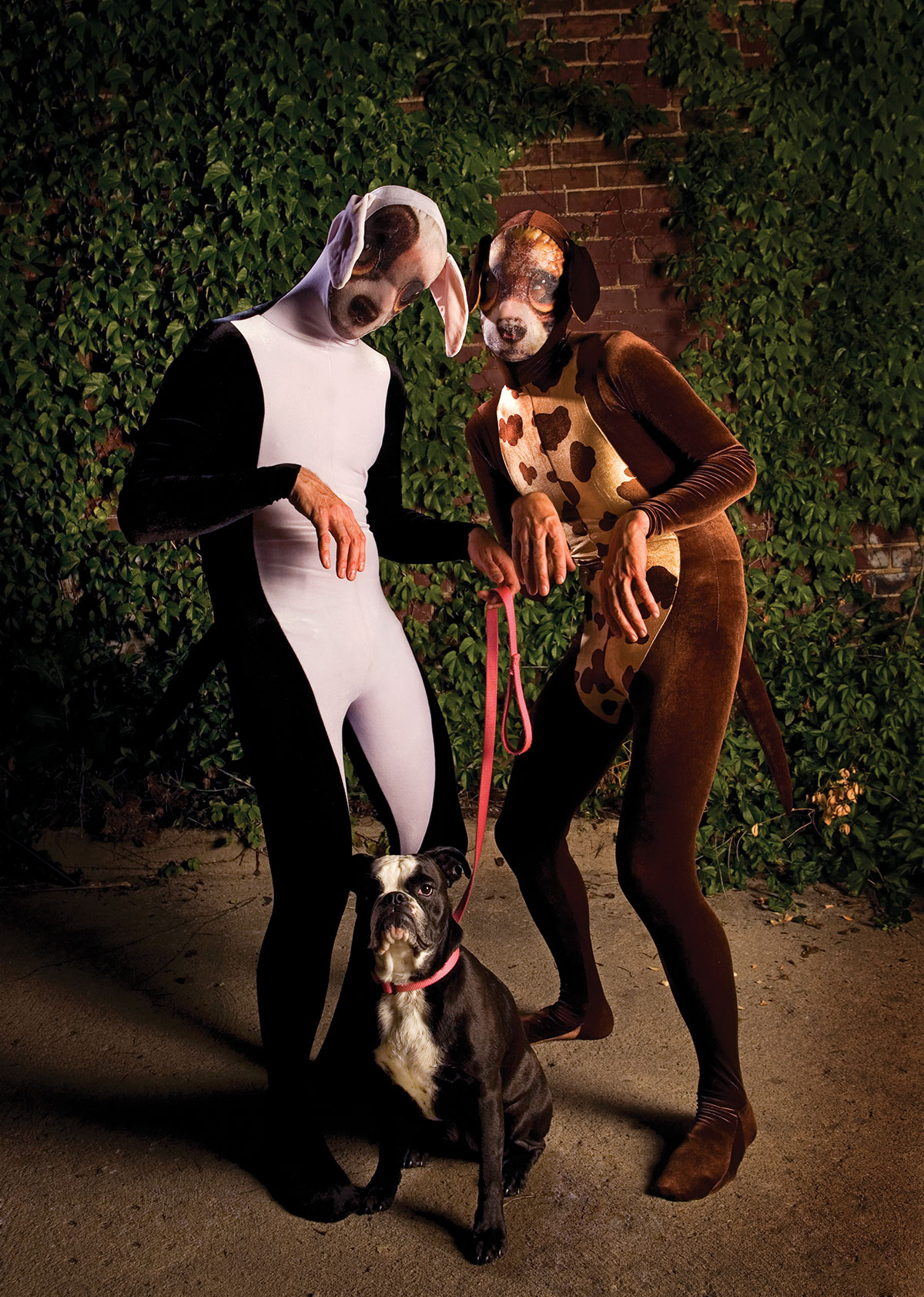
In 1999, Grant Heaps and Ian Phillips were two men in their thirties wanting to relive the joy of trick-or-treating. That October 31st, they borrowed generic, store-bought disguises and dressed up for Halloween for the first time in about twenty years.
“It was so much fun having people stop you and ask you if they could take your picture,” says Heaps. “The anonymous nature of wearing a mask was thrilling.”
Heaps, the assistant wardrobe co-ordinator for the National Ballet of Canada, and Phillips, a book maker and illustrator (occasionally featured in this very magazine), became addicted to that thrill and decided to create their own costumes the following year. A visit to Goodwill yielded the suits required to dress as Mormon missionaries, and the duo made their way across the city, handing out pamphlets as they went.
“People we know crossed the street to get away from us when they saw us coming, not realizing it was us,” says Phillips. “People thought we were real and left a wide berth for us.”
From there, their level of creativity and daring only escalated. With Heaps doing most of the sewing and Phillips the accessorizing, the next six years yielded a butcher and his slaughter, a giant pair of jeans, sad-eyed puppies (“So our pup, Fancy, could come out with us,” says Heaps), sock monkeys, Sea-Monkeys, and, perhaps scariest of all, star-spangled Americans.
“The giant pants won us one hundred dollars at Vazaleen,” says Heaps. Adds Phillips: “A lot of people opened the fly and reached inside…we weren’t prepared for that.”
Apparently wearing a mask can be even more of a thrill than expected.


“We overheard people saying the Americans were the scariest costumes they had ever seen,” says Heaps. “There was lots of booing,” Phillips says. “But people are supposed to say ‘boo’ on Halloween.”

“The Sea-Monkeys were super fun. We got drunk and ran around like maniacs hitting people with our tails,” says Heaps. “People either got it right away or had no clue,” adds Phillips. “I think we somehow ended up on some home-improvement television show that was shooting on Church Street.”

“The sock monkeys were made from a hundred and twenty pairs of socks I bought at the Army & Navy, in Vancouver,” says Heaps. “They destroyed the [sewing machine] serger making them.”

“Someone told us we were really sick when they saw us on the street in this costume,” says Phillips. “What were they thinking? ”

“These costumes probably garnered the most verbal abuse—someone on the streetcar threatened to kill us,” says Phillips. “A prostitute propositioned us, said not to worry, that Jesus would forgive.”